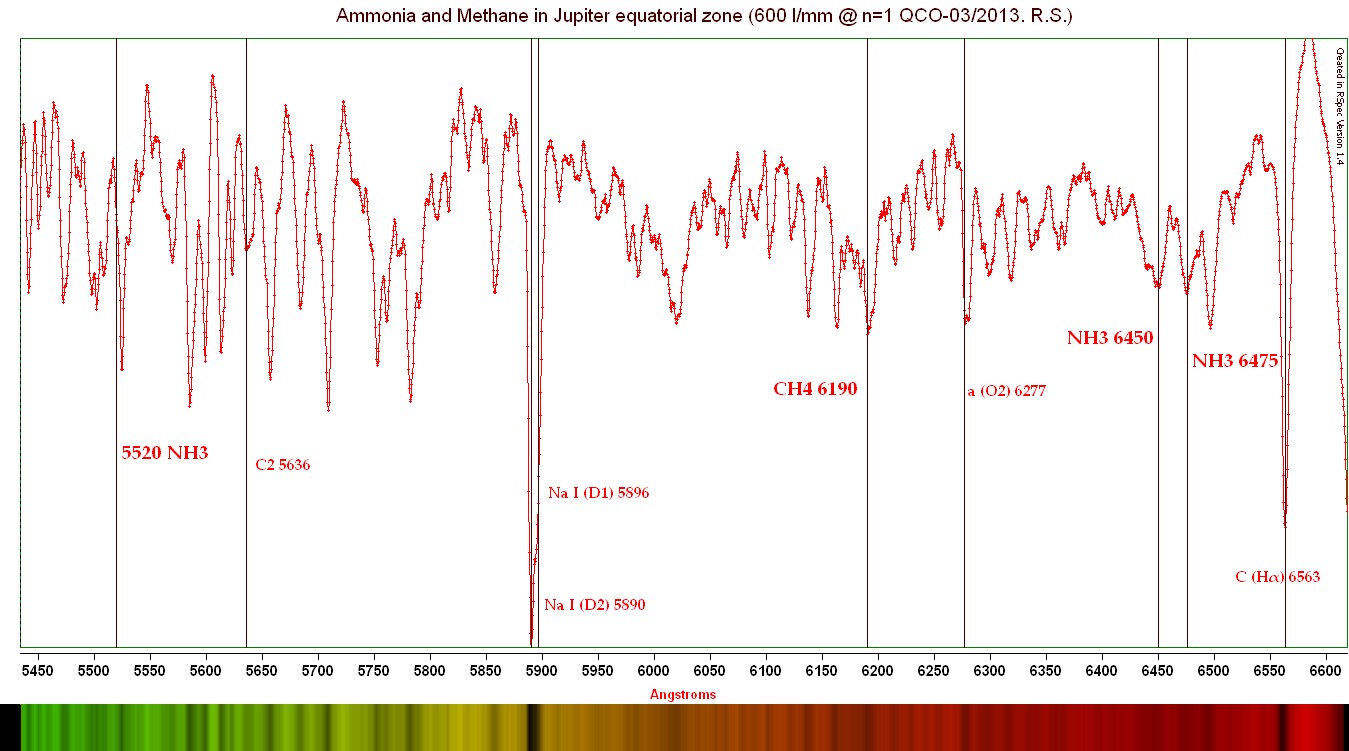QCSPEC is short for "Quantum Cafe Spectrograph" - a home made spectrograph designed for 1 Angstrom resolution. Doppler shifts of many objects can be measured, for example Jupiter's rotation rate. The QCSPEC has been used with a Canon 450D camera, and an ST6 SBIG CCD camera. High quality reflection gratings from Edmund optics (with 600 and 1200 lines / mm), a precision slit from Thor Labs, spare lenses, and plywood were used to build the wonder! Machined parts were avoided, to bring the cost down. The whole concept was inspired by Christian Buil's website.
The Star Analyser transmission grating with 100 l/mm is now a widely used device. It provides high throughput for dim objects such as supernovae and quasars, but at the cost of low dispserion (about 10 Angstrom). The Star Analyser is just a single grating that you can use in front of the camera lens or in front of your prime focus in any telescope.
Example with the QCSPEC - Ammonia and Methane in Jupiter: Confirmed!
The spectrum below is one of the more fascinating results: Ammonia and Methane (NH3 and CH4) in Jupiters atmosphere is seen as molecular absorption bands. Most of the spectral lines are just reflected sunlight, and the sodium line (Fraunhofer D1 and D2 are pronounced). QCSPEC with the 600 l/mm reflective grating, narrow slit, and a Canon 450D camera.
Ammonia and Methane (NH3 and CH4) in Jupiters atmosphere is seen as molecular absorption bands. Most of the spectral lines are just reflected sunlight, and the sodium line (Fraunhofer D1 and D2 are pronounced). QCSPEC with the 600 l/mm reflective grating, narrow slit, and a Canon 450D camera.